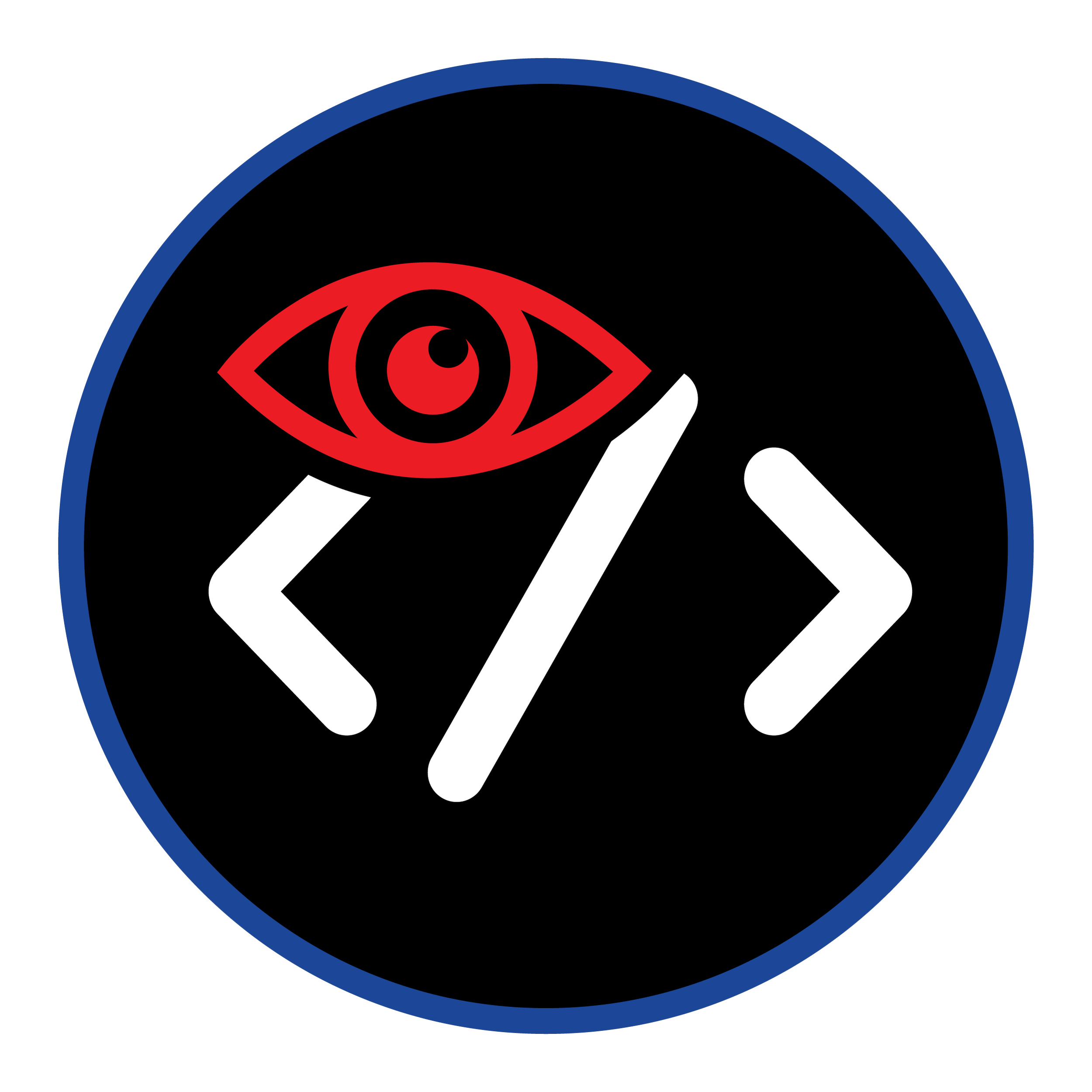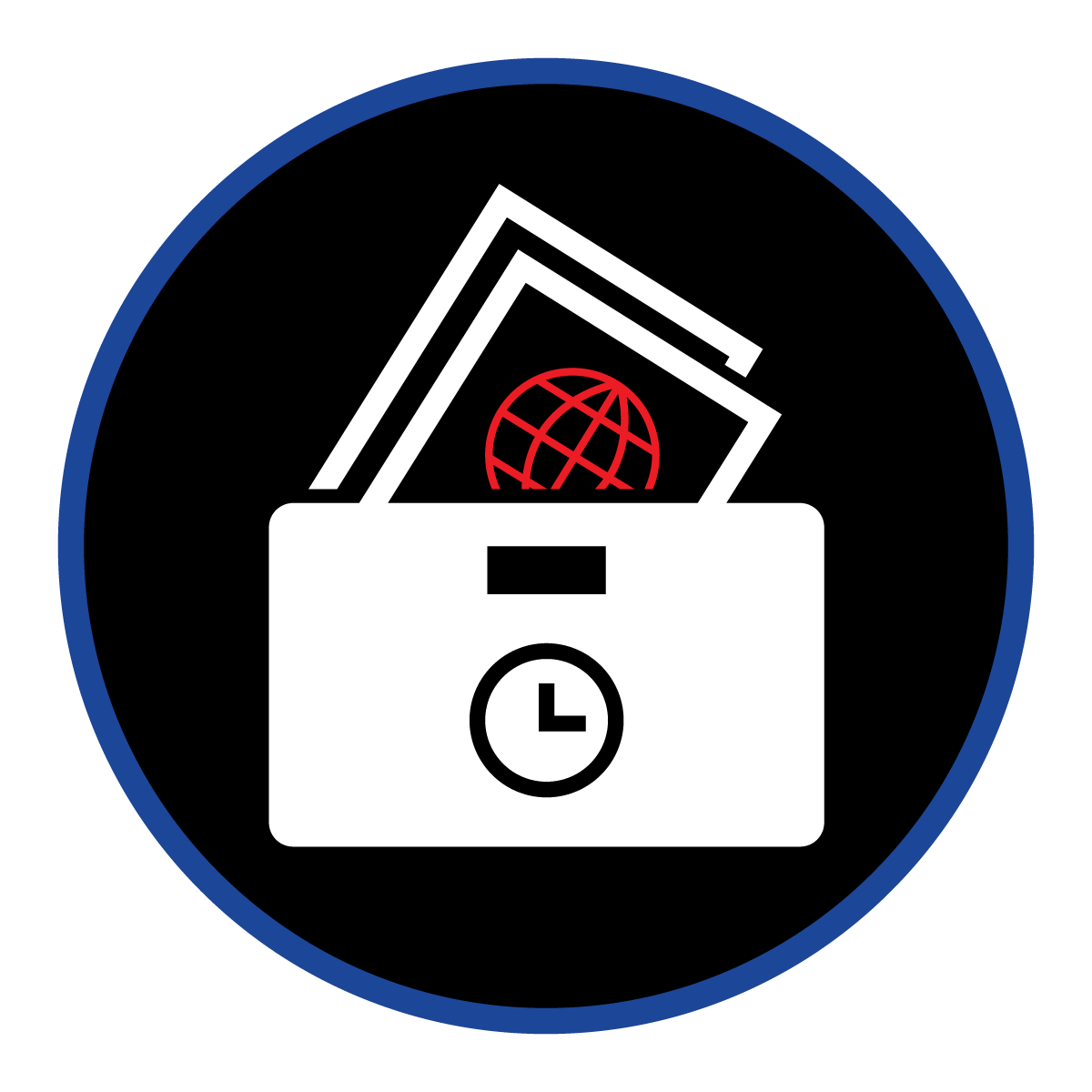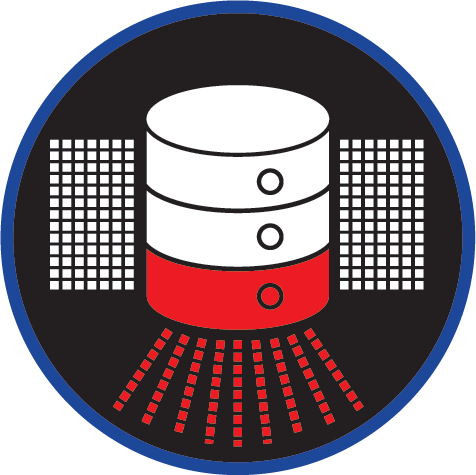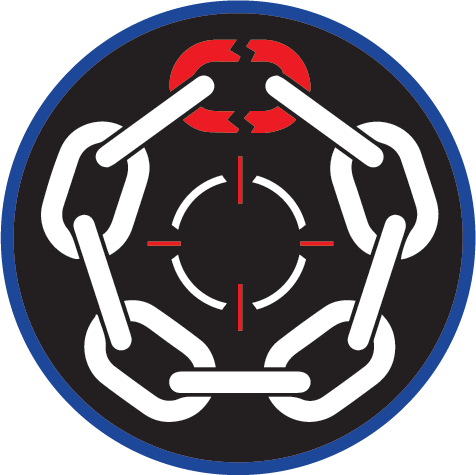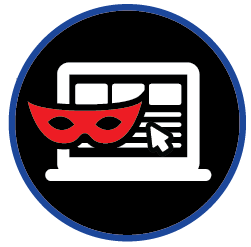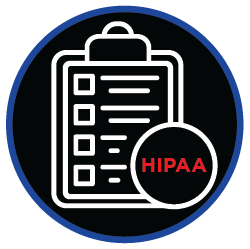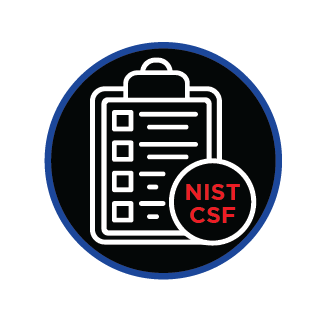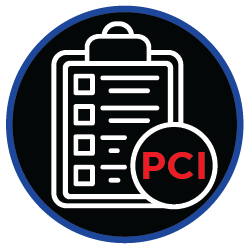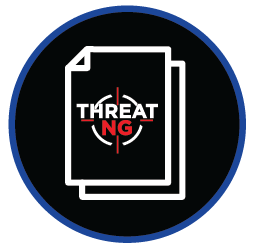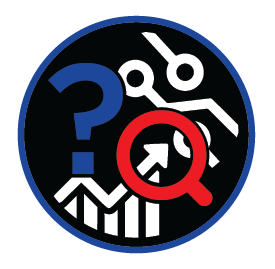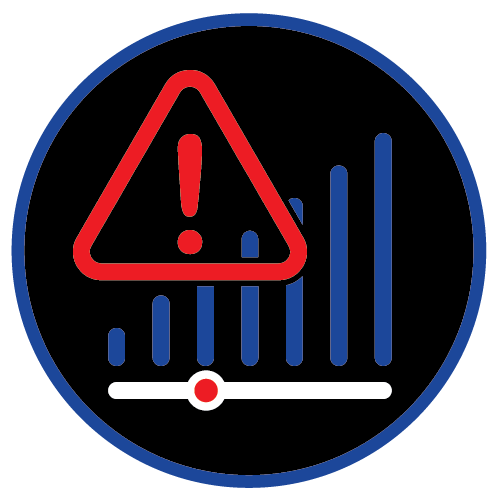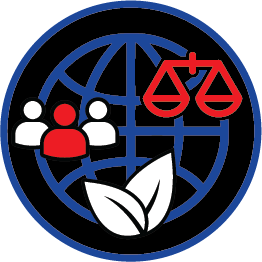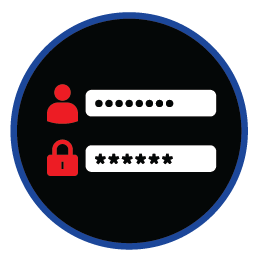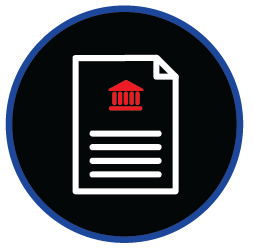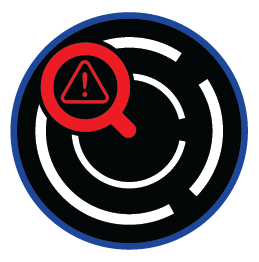
ThreatNG: Empowering Proactive Third-Party Risk Management
Uncover, Assess, and Monitor Third-Party Risks with Comprehensive Intelligence and Actionable Insights
In today's interconnected business landscape, third-party relationships introduce inherent risks that can impact an organization's security, reputation, and financial stability. ThreatNG's third-party risk intelligence and monitoring capabilities empower organizations to proactively identify, assess, and mitigate these risks through continuous monitoring, deep insights into the surface of third-party attacks, and alerts on emerging threats. By leveraging ThreatNG's extensive investigation modules and intelligence repositories, businesses can make informed decisions about their third-party ecosystem, ensuring operational resilience and safeguarding critical assets.
Elevate Your Third-Party Risk Management with External Investigation Modules
Gain Comprehensive Oversight of Your Third-Party Landscape and Preemptively Address Threats
It is crucial to thoroughly understand the risks inherent in your third-party ecosystem. Our external investigation modules provide valuable insights into your organization's and your third parties' external-facing exposure, enabling you to proactively identify and mitigate potential threats. From comprehensive domain intelligence and attentive social media monitoring to discreet dark web surveillance and detailed technology stack analysis, our tools empower you to uncover hidden vulnerabilities and strengthen your organization's defenses.
Domain Intelligence for Vendor Risk Assessment
Achieve unparalleled clarity into your vendors' domain infrastructure through sophisticated discovery and evaluation. Map DNS records, subdomains, certificates, and IP addresses to identify potential weaknesses, such as exposed APIs, development environments, or misconfigured web application firewalls. Pinpoint known vulnerabilities associated with the discovered applications and vendors, enabling proactive risk treatment and a more resilient third-party security posture.
Cloud and SaaS Exposure Monitoring for Third Parties
Gain comprehensive visibility into your third parties' cloud and SaaS footprint, including both sanctioned and unsanctioned services, potential impersonations of cloud services targeting them, and any publicly exposed cloud storage. Identify and continuously monitor the SaaS applications your vendors utilize, evaluating their security configurations and potential vulnerabilities to ensure the secure and compliant use of cloud and SaaS services, thereby minimizing the risk of data breaches and unauthorized access that could affect your organization.
Sensitive Code Exposure Detection in Third-Party Assets
Scrutinize public code repositories and mobile app stores for instances where third parties may have inadvertently leaked sensitive information, such as exposed passwords, API keys, or configuration files. Proactively detect such exposures within their digital footprint and facilitate immediate remediation to prevent unauthorized access and data breaches that could cascade to your organization, safeguarding critical assets and intellectual property shared with or accessible by these vendors.
Online Sharing Exposure Monitoring of Third Parties
Monitor online code-sharing platforms and other file-sharing services for unauthorized sharing of sensitive organizational data or intellectual property by your third parties. Identify such exposures originating from your vendors and take swift action to remove the content and prevent further damage to your organization's information assets.
Sentiment and Financial Health Assessment of Vendors
Monitor news articles, social media sentiment, SEC filings, and ESG violations related to your organization and its third parties. Proactively identify potential reputational risks, financial instability, or compliance issues within your vendor network that could affect their operations or your relationship with them.
Analysis of Archived Web Pages of Third Parties
Analyze archived web pages associated with your third parties to uncover sensitive information they may have inadvertently exposed. Identify vulnerabilities in their old code, outdated software versions, or exposed credentials to understand historical risks and encourage remediation to prevent future breaches that could involve your data or systems.
Dark Web Presence Monitoring for Third-Party Risks
Monitor dark web forums, marketplaces, and other underground sources for mentions of your organization, third parties, or the shared supply chain. Identify potential threats, such as leaked data from your vendors, compromised credentials of their personnel that could be used against you, or planned attacks targeting them that might have downstream effects on your organization. This allows for proactive measures to safeguard your organization and its partners.
Technology Stack Visibility for Third-Party Vulnerability Management
Identify and analyze the technologies used by your organization as well as those employed by your third parties. This provides insights into potential vulnerabilities and security risks linked to specific technologies or outdated versions within their infrastructure. Prioritize discussions about patching and updates with your vendors, ensuring that their technology stack, which you rely on, remains secure and resilient.
Search Engine Exploitation for Third-Party Exposure Discovery
Use advanced search engine exploitation techniques to uncover sensitive information that your organization or its third parties may have inadvertently exposed. Identify vulnerabilities in their externally-facing assets, such as exposed privileged folders, public passwords, or susceptible servers. This allows for proactive measures to prevent data breaches and unauthorized access stemming from your vendor network.
Social Media Monitoring for Third-Party Risk Intelligence
Actively monitor social media platforms for mentions of your organization, third parties, and their supply chains. Analyze posts, hashtags, links, and tags to identify potential risks such as data leaks from vendors, negative sentiments that could impact your reputation by association, or indicators of brand damage affecting your partnerships. Respond quickly to emerging threats within your third-party ecosystem and protect your reputation through real-time monitoring capabilities.

Quantify and Mitigate Third-Party Risk with Advanced Susceptibility Analysis
Go Beyond Vulnerability Identification to Understand the True Business Impact of Potential Threats
ThreatNG excels at providing superior business context for external digital risks. Its holistic approach, deep analytical capabilities, and focus on actionable insights move beyond simple vulnerability identification to deliver a comprehensive understanding of the potential business impact of those risks. This means understanding not just the "what" of external digital risks but also the "why" and the "so what." By providing this level of context, ThreatNG empowers organizations to make informed decisions, prioritize remediation efforts, optimize their security investments, and ultimately move beyond reactive security measures to adopt a proactive, risk-based approach to third-party risk management.
BEC & Phishing Susceptibility
Correlate data from various sources, including sentiment analysis, domain intelligence, and dark web presence, to assess an organization's susceptibility to BEC and phishing attacks. This helps organizations understand the financial and operational consequences of falling victim to such attacks and prioritize preventive measures.
Brand Damage Susceptibility
Combine technical vulnerability analysis with sentiment analysis, financial data, and ESG factors to assess the potential impact of a brand-damaging incident. This holistic approach helps organizations understand how these factors could affect their market value, customer loyalty, and overall business performance.
Breach & Ransomware Susceptibility
Assess the likelihood and potential impact of a breach or ransomware attack by considering various factors like technical vulnerabilities, exposed sensitive ports, and dark web activity. This helps organizations understand the potential financial and operational costs of a successful attack and prioritize their cybersecurity investments accordingly.
Cyber Risk Exposure
Translate technical vulnerabilities, exposed code repositories, and compromised credentials into a comprehensive cyber risk exposure score. This score and insights into the potential consequences of a successful cyberattack, helps organizations understand their overall risk profile and prioritize security investments.
Data Leak Susceptibility
Go beyond simply identifying data leaks to evaluate the sensitivity of the exposed data, potential legal and regulatory implications, and the possible financial and reputational damage. This context helps organizations understand the severity of the risk and take appropriate steps to protect sensitive information.
ESG Exposure
Link ESG controversies and violations with their potential impact on an organization's reputation, investor confidence, and long-term sustainability. By identifying these risks early on, organizations can proactively address ESG concerns and demonstrate their commitment to responsible business practices.
Supply Chain & Third Party Exposure
Analyze the entire supply chain, considering third-party vulnerabilities and risks, to identify potential disruptions and their impact on the organization's operations. This helps organizations make informed decisions about their supply chain partnerships and prioritize risk mitigation efforts.
Subdomain Takeover Susceptibility
Conduct in-depth analysis of subdomains, DNS records, and SSL certificates to accurately assess the risk of subdomain takeover. By understanding the potential consequences, such as phishing attacks or brand impersonation, organizations can take proactive steps to protect their brand and customer base.
Web Application Hijack Susceptibility
Analyze the externally accessible components of a web application to identify potential entry points for attackers. Go beyond simply flagging vulnerabilities to provide insights into the potential consequences of a successful hijack, such as customer data theft or disruption of critical services. This context helps organizations understand the potential financial and reputational damage and prioritize remediation efforts accordingly.
External Adversary View
Your Vendor's Vulnerability is Your Attacker's Entry Point
Vendor questionnaires and security ratings only show you part of the picture. An attacker doesn't see your third parties as separate entities; they see them as potential entry points into your network. The ThreatNG External Adversary View provides the crucial outside-in context that static assessments miss. It continuously assesses your vendors' digital footprints just as an attacker would, automatically connecting a vendor's exposed sensitive port with one of their employees' compromised credentials found on the dark web to reveal a complete attack path. By mapping these supply chain risks to frameworks like MITRE ATT&CK, we demonstrate how a vulnerability in your vendor's environment can directly threaten your own, enabling you to transition from trust-based to data-driven risk management.

External GRC Assessment
Strengthen Third-Party GRC: Continuous Assessment for Vendor Risk
Effective Third-Party Risk Management requires a deep understanding of your vendors' external security and their impact on your compliance. ThreatNG's External GRC Assessment offers a critical "outside-in" view of your third parties' digital footprint, identifying vulnerabilities and risks that could impact your GRC standing. This allows you to continuously assess vendor compliance against regulatory standards, making your TPRM program more robust, proactive, and aligned with your overall governance and risk objectives.

Transform Your Third-Party Risk Management with ThreatNG
Unparalleled Visibility into Third-Party Risks
ThreatNG's advanced discovery and assessment capabilities provide deep insights into third-party vulnerabilities, exposures, and potential threats, enabling organizations to manage risks across their entire vendor ecosystem proactively.
Continuous Monitoring and Alerts
ThreatNG monitors third-party digital footprints, providing real-time alerts on emerging threats, data leaks, and security
Actionable Insights for Informed Decision-Making
ThreatNG's comprehensive reports and actionable insights empower organizations to make informed decisions regarding vendor selection, contract negotiations, and ongoing risk mitigation strategies, fostering a more secure and resilient business environment.

Discover and Inventory
Deep Dive Discovery for Unparalleled Third-Party Risk Management
Unparalleled Breadth and Depth of Discovery: ThreatNG's advanced scanning and reconnaissance capabilities delve deep into the digital footprints of organizations, their third parties, and extended supply chains. This includes surface-level assets like domains and subdomains and hidden assets, shadow IT, and potential vulnerabilities across various attack surfaces, including cloud services, social media, code repositories, and even the dark web.
Continuous Monitoring: ThreatNG provides continuous, comprehensive oversight of your third-party landscape. It monitors all discovered assets and associated risks, delivering real-time alerts on changes, new vulnerabilities, or emerging threats. This empowers organizations to proactively mitigate risks and maintain a continuously updated understanding of their third-party ecosystem.
Contextual Intelligence and Actionable Insights: ThreatNG goes beyond simply listing assets and vulnerabilities. It provides deep contextual intelligence and actionable insights into the potential impact of identified risks. This includes correlating data from multiple sources, analyzing historical trends, and providing clear recommendations for remediation, enabling organizations to make informed decisions and prioritize their risk mitigation efforts effectively.
Assess and Examine
Assess, Prioritize, and Mitigate Third-Party Risks with Actionable Intelligence
Comprehensive Multi-dimensional Risk Profiling: ThreatNG assesses third-party risks across various dimensions beyond cybersecurity vulnerabilities. It evaluates susceptibility to social engineering attacks (BEC, phishing), brand damage potential, ESG exposure, supply chain risks, and data leakage potential. This holistic approach provides a more comprehensive view of the third party's overall risk profile.
Deep and Continuous Assessment of the Digital Footprint: ThreatNG's advanced discovery capabilities and continuous monitoring ensure that all aspects of the third party's digital footprint, including their domains, subdomains, social media presence, cloud services, SaaS applications, code repositories, and even dark web mentions, are thoroughly and continuously assessed for vulnerabilities and risks. This eliminates blind spots and ensures that no potential risk goes unnoticed.
Actionable Insights and Prioritization: ThreatNG doesn't just identify risks; it also provides actionable insights and prioritization based on severity and potential impact. This allows organizations to focus their mitigation efforts on the most critical risks, ensuring efficient and effective risk management.

Report and Share
Unlock Complete Third-Party Risk Intelligence
Unparalleled Breadth and Depth of Data Collection: ThreatNG leaves no stone unturned. It goes beyond basic surface-level scans to delve deep into the digital footprint of your third parties, including shadow IT, hidden assets, and vulnerabilities across domains, social media, code repositories, cloud services, the dark web, and more. This comprehensive approach ensures a complete understanding of the risks associated with each third party.
Continuous Monitoring and Insights: ThreatNG doesn't just provide a one-time snapshot. It monitors all discovered assets and risks continuously, delivering real-time alerts on changes, new vulnerabilities, or emerging threats. This allows you to proactively address risks as they arise and maintain a constantly up-to-date view of your third-party ecosystem.
Contextualized Intelligence and Actionable Reporting: ThreatNG translates raw data into meaningful insights. It provides detailed, multi-dimensional risk profiles, prioritized vulnerability assessments, and clear remediation recommendations. This empowers you to make informed decisions, prioritize your efforts effectively, and optimize your third-party risk management strategy.
Continuous Visibility
Gain Complete and Continuous Visibility Across Your Entire Third-Party Ecosystem
Offers a Holistic View of the Attack Surface: ThreatNG doesn't just focus on cybersecurity vulnerabilities. It provides a comprehensive view of third-party risk across various dimensions, including susceptibility to social engineering, brand damage, data leakage, ESG factors, and supply chain vulnerabilities. This holistic approach ensures that no potential risk goes unnoticed.
Continuously Monitors the Entire Digital Footprint: ThreatNG combines advanced discovery capabilities with continuous monitoring to provide an up-to-date view of your third parties' digital footprint. This includes their domains, social media presence, cloud services, code repositories, dark web mentions, and more. This ensures that you have complete visibility into all potential attack vectors.
Delivers Alerts and Actionable Insights: ThreatNG goes beyond simply identifying risks. It provides real-time alerts on changes, new vulnerabilities, and emerging threats, empowering you to take immediate action. It also offers actionable insights and prioritization based on severity and potential impact, enabling you to focus on the most critical areas.

Drive Collaboration and Informed Decision-Making for Superior Third-Party Risk Management
ThreatNG empowers organizations to break down silos and foster collaboration, make informed decisions based on evidence, and ensure consistent and compliant risk management practices by combining its comprehensive data collection and analysis capabilities with features such as dynamically generated questionnaires, centralized policy management, and comprehensive reports. This enables different teams and stakeholders to access and share relevant information, make informed decisions regarding third-party relationships, risk mitigation, and incident response, and align third-party risk management activities with organizational policies and regulatory requirements. In essence, ThreatNG provides the necessary tools and insights to build a robust and proactive third-party risk management program by acting as a powerful enabler of collaboration and informed decision-making.
ThreatNG fosters superior collaboration and informed decision-making in Third-Party Risk Intelligence and Monitoring by:
Role-Based Access Control (RBAC)
Define and enforce granular access controls based on user roles and responsibilities. This ensures that sensitive data and insights are only accessible to authorized personnel, promoting data security and compliance while facilitating collaboration across teams.
Dynamically Generated Correlation Evidence Questionnaires
Dynamically generate questionnaires based on correlated evidence across various data points, allowing for streamlined information gathering and validation. This fosters collaboration between different teams and third parties, ensuring that everyone clearly understands the risks and can work together to address them.
Centralized Policy Management
Use a centralized platform for defining, implementing, and enforcing third-party risk management policies. This ensures consistency in risk assessment and mitigation strategies across all third parties and facilitates informed decision-making based on established guidelines and risk tolerances.

Strengthen Your Defenses with Proactive Third-Party Risk Intelligence
Gain Critical Insights from Dark Web Monitoring, Vulnerability Databases, and More
ThreatNG provides access to a wealth of threat intelligence data, empowering you to defend your organization and its third parties proactively. From monitoring the dark web for leaked credentials and attack discussions to leveraging extensive vulnerability databases and bank identification numbers, ThreatNG equips you with the knowledge needed to stay ahead of emerging threats. This proactive approach strengthens your security posture and reduces the risk of cyberattacks, financial fraud, and reputational damage.
Dark Web
Proactive Threat Intelligence: Access dark web data to identify potential threats that may not be visible through conventional means. This includes leaked data, compromised credentials, or discussions about potential attacks targeting your organization or its third parties. This early warning system empowers you to take proactive measures and prevent damage before it occurs.
ESG Violations
Ethical and Sustainable Partnerships: Go beyond cybersecurity and assess potential reputational risks and financial implications of your third parties' non-compliant or unethical practices. This ensures that you partner only with entities that align with your values, minimizing potential damage to your brand and stakeholder trust.
Ransomware Events
Strengthening Cyber Resilience: Gain valuable insights into the tactics, techniques, and procedures (TTPs) employed by attackers through a repository of documented ransomware events. By understanding how other organizations were impacted, proactively identify your vulnerabilities and implement preventive measures to avoid becoming the next victim.
Compromised Credentials
Secure Access Control: Continuously monitor compromised credentials to identify potential weak points in your third-party ecosystem. Receive alerts about compromised accounts and take immediate action, such as resetting passwords or revoking access, before attackers can exploit those credentials to gain unauthorized entry.
Mobile Applications
Evaluate any third-party mobile apps used by their organization for potential security risks. By examining the contents of these apps, organizations can pinpoint potential security vulnerabilities, such as hardcoded credentials, insecure communication protocols, or known weaknesses. This information empowers organizations to make informed decisions regarding third-party apps' security stance and take proactive steps to mitigate potential risks.
SEC Form 8-Ks
Gain deeper insights into the security posture of your third-party vendors and their subcontractors. Access a comprehensive database of cybersecurity incidents disclosed by publicly traded companies, revealing potential vulnerabilities and weaknesses within your supply chain. By leveraging this unique intelligence source, proactively identify and address third-party risks before they impact your organization.
Known Vulnerabilities
Proactive Vulnerability Management: Leverage an extensive database of known vulnerabilities to assess your third parties' exposure to potential exploits. By identifying outdated software or unpatched systems, prioritize remediation efforts and reduce the risk of successful attacks.
Bank Identification Numbers (BINs)
Access a global repository of Bank Identification Numbers (BINs) to identify potential financial fraud or unauthorized transactions involving your third parties. Detect and prevent economic losses by monitoring suspicious activity associated with specific BINs.
Bug Bounty Programs
Provides a comprehensive view of third-party security postures by assessing vulnerabilities uncovered through bug bounty programs across various organizations and industries. This information enables organizations to conduct thorough due diligence, identify potential risks associated with third parties, and make informed decisions about partnerships and collaborations. By leveraging this knowledge, businesses can proactively mitigate risks, strengthen their vendor network, and protect themselves against possible vulnerabilities from third-party relationships.

Third Party Risk Management (TPRM) Use Cases
As businesses continue to expand their operations, the need for third-party relationships becomes increasingly important. However, these relationships also have inherent risks, including data breaches, compliance violations, and reputational damage. At ThreatNG, we understand the challenges of managing third-party risk and have developed a comprehensive platform to address these issues. ThreatNG empowers organizations wishing to improve their third-party risk management strategies as it offers a variety of tunable capabilities to your organization's unique requirements.






